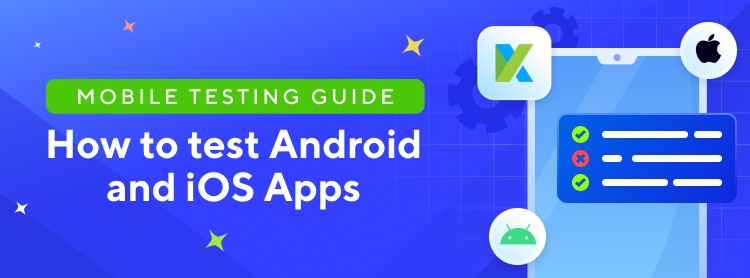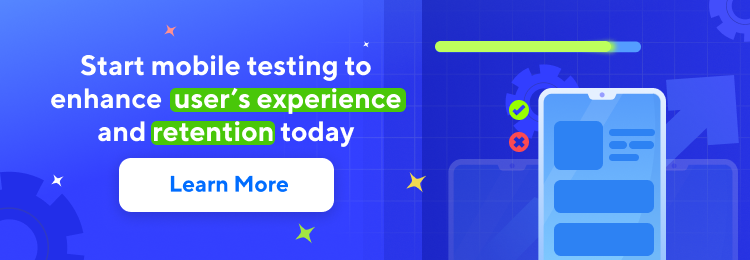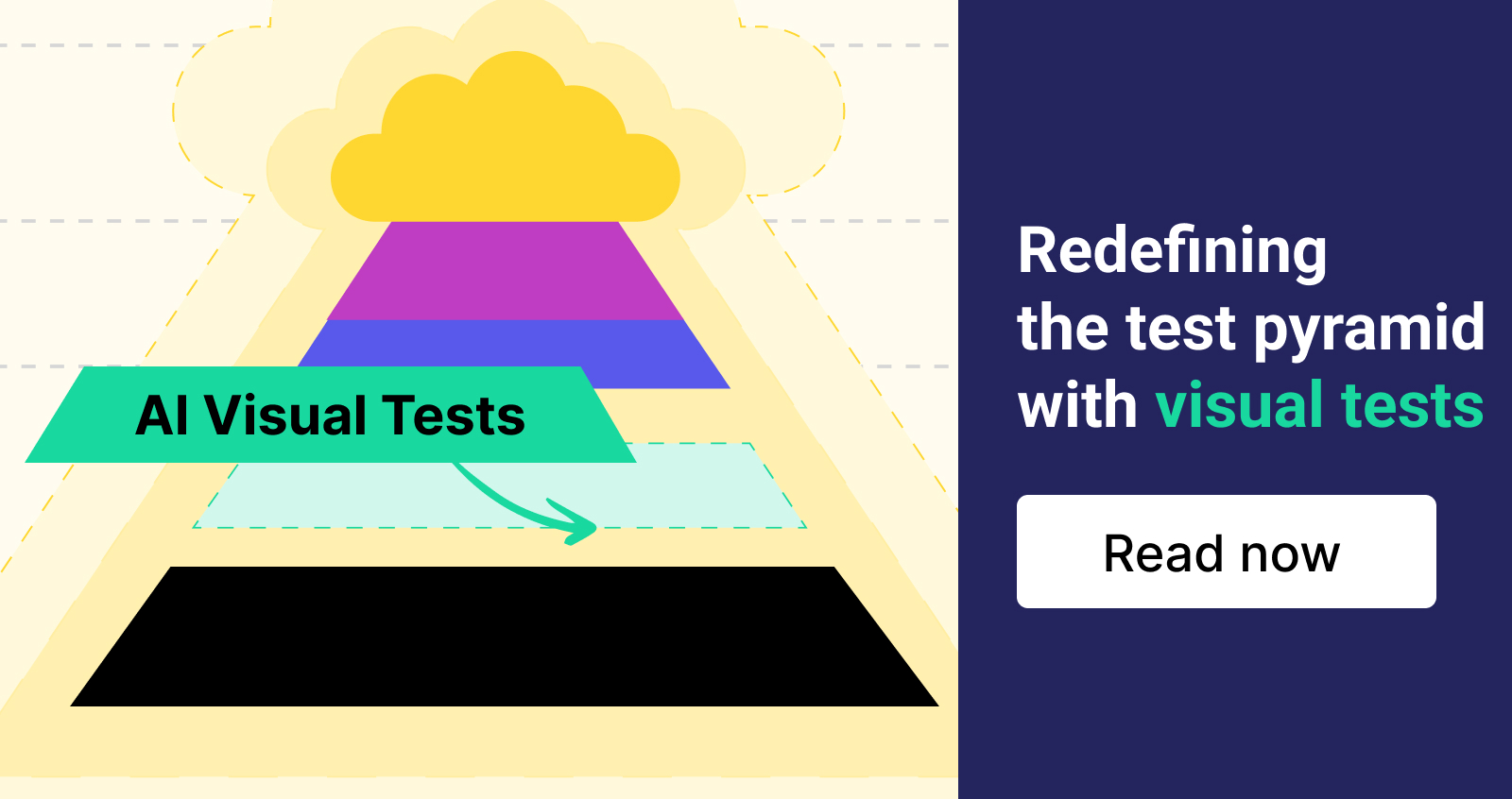Mobile Testing Guide: How to test Android and iOS apps

Have you ever used an app on your mobile device and experienced slow load times, crashes, freezing screens, and privacy breaches? Or has your team discovered an error in an existing functionality weeks after you’ve launched an app? If you are a mobile app user, the answer is likely yes.
As a consumer, you may have been triggered to delete the app completely, reinstall it, or download a competitor’s app. As the mobile app developer, you have possibly lost customers and damaged your reputation.
So why does this happen? The answer is simple — mobile testing has not taken place.
According to Statista, there were 230 billion mobile app downloads in 2021, surpassing 200 billion in 2019. The mobile app market is growing at a rapid rate, and mobile apps play a vital role in our everyday lives. That is why conducting a mobile test is so crucial for company success.
In this guide, we will outline what mobile testing is, how to do mobile testing, and what you need to conquer it.
What is Mobile Testing?
Mobile app testing is the process of testing an app to ensure it is functioning properly and provides a smooth and enjoyable user experience. This can be done manually or with mobile test automation tools.
Mobile testing is key to designing a high-quality product that stands out from the rest. Before releasing an app to the market, every company must verify it is accessible, reliable, consistent, and user friendly.
You can’t expect an app to be successful without mobile testing. It guarantees an app is ready to launch and of excellent quality.
Types of Mobile Applications
There are three basic types of mobile apps that require different software to develop. While you may approach each of these differently, they all require mobile testing.
1. Native Apps (iOS/Android)
Native apps are created specifically for iOS or Android. Since they are designed for one particular operating system, they run more quickly and smoothly. Native apps make use of different device resources such as GPS, camera, device storage, etc.
2. Web Apps
Web apps can be accessed from any mobile device because they are delivered through a native browser such as Chrome or Safari. Popular web apps include emails, instant messaging apps, and weblogs.
3. Hybrid Apps
Hybrid apps run through a web browser and can be downloaded on a mobile device. Just like web apps, they are developed through HTML5 and JavaScript. Hybrid apps can be installed from the app store or have their own icon.
How to Do Mobile Testing
Learning how to do mobile testing will help you develop a five-star rated app. Follow these steps to create a successful mobile testing strategy.
1. Decide Your Devices
The first step in your mobile test strategy should be deciding what device to test your mobile app on. Choose real devices with different OS and screen resolutions to receive accurate testing results.
2. Decide Between Emulators or Simulators
Since mobile testing on real devices can be expensive and time-consuming, you have the option to test on two virtual devices — a simulator and an emulator.
A mobile simulator imitates the software on your system that was designed for mobile and lets you run programs not made for your OS. Emulators, such as an android mobile emulator, are exactly the same but include the hardware of your mobile as well.
Emulators are more suitable for debugging, but binary translation makes them slow. Simulators are not as reliable for debugging purposes, but they work faster as there is no binary translation. With emulators, you can’t modify your apps, and simulators allow you to set up identical environments to the original device’s OS.
Therefore, simulators are better for mobile testing, and emulators are better for mobile site testing. However, the best way to receive the most accurate results is to use real devices over virtual devices.
3. Understand Tools
The next step in your mobile test app strategy is to clearly understand the tools that will translate your tests into actions. This will make you more efficient and give you more confidence during testing.
While you can build your own testing frameworks to improve efficiency, increase test speed, and reduce maintenance costs, vendor-based tools allow you to meet growing demands at a faster rate and get feedback quicker. Vendor-based tools already have built-in features to help anyone run a test, despite their level of technological knowledge.
Plus, it can be difficult to choose and set up your own testing framework, but vendor tools have a faster learning curve and make it easier to get started with automation. With vendor-based tools, you can reach customer service 24/7 so you can solve any issue at any time.
4. Document Throughout the Entire Process
Documentation is key for creating a perfect mobile test strategy. If you don’t document from start to finish, you risk wasting your time and creating problems in the future. No matter how small, you need to document every decision as it can help train employees and help solve issues.
What Are the Best Tools to Use for Mobile Testing?
There are several affordable mobile testing tools to choose from, but the fastest and most efficient are mobile test automation tools. Here are the advantages of using mobile test automation:
- Scalable for larger apps
- More cost-efficient
- Can perform multiple tests at once
- Executes difficult tasks that manual testers can’t perform
Building your own in-house framework means using open-source testing libraries or SDKs such as Selenium WebDriver, Cypress, Espresso, XCUITest, EarlGrey, Rest Assured, K6, etc. This requires a high level of experience and additional time, whereas a pre-built tool is ready for you to use and accessible when you need it.
Open-source libraries are designed to build automated testing tools, so using a pre-built tool will save you time and effort and allow you to run tests quickly and easily.
Here are some of the best mobile test automation tools for effective iOS and Android app testing:
- Katalon: Built on top of Appium and Selenium, Katalon is a ready-to-use vendor-based tool and ready-made test automation platform for mobile, web, API and desktop (Windows) apps. Katalon is easy-to-use and best for users without the dev resources to build and maintain a mobile testing framework from scratch.
- Appium: Appium is the most popular testing framework that can be used on both native and hybrid apps. This tool supports multiple languages and can do cross-platform development.
- XCUI Test: XCUI Test supports iOS apps and allows testers to record the process instead of writing the codes.
- Robotium: Robotium supports Android apps and can be used on native and hybrid apps and has simple test scripts.
Tips for Mobile Testing
Here are the main tips for mobile app testing:
- Learn the app you are testing
- Recall differences between desktop and mobile
- Use real devices if possible
- Document your findings
- Use the development menu for iOS and Android
- Vse emulators and simulators for mobile testing
- Verify the functionality and performance of your app
- Get users to test your app
- Consider the human factor
Mobile Testing with the Katalon Platform
The Katalon platform makes software testing more efficient and simpler. We are an end-to-end quality platform that provides automation testing on multiple domains such as web, API,mobile app and desktop testing. Let us help you begin your mobile testing journey and assist in the creation of high-quality products.






